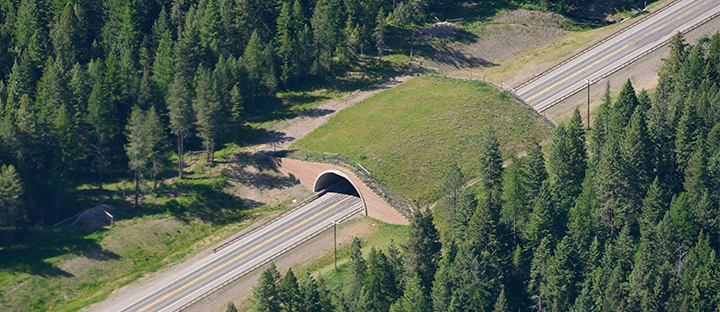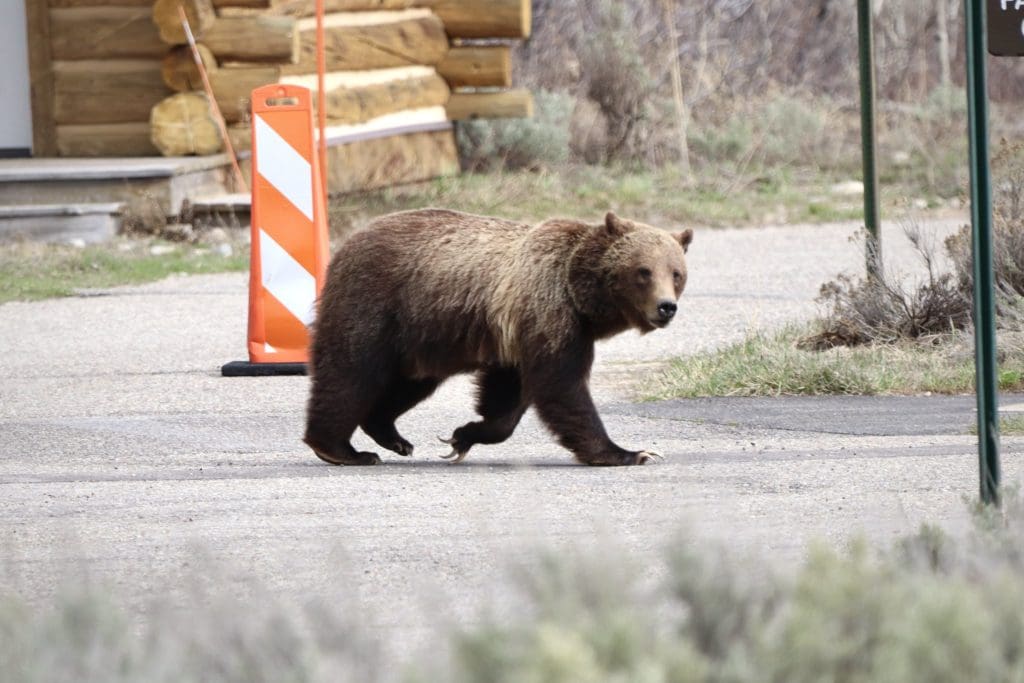Investments will enhance wildlife movement and traveler safety in Montana and Wyoming
Yellowstone to Yukon Conservation Initiative applauds today’s announcement of federal investments in wildlife crossing projects that will create safer highways for wildlife and people.
Close to $33 million from the U.S. Department of Transportation will be used to build new wildlife crossings and fencing on Hwy-93 in Montana and Wyoming’s US-189, and to plan crossing infrastructure on I-90 in Montana.
These highways have long been prioritized for wildlife connectivity projects in the Yellowstone to Yukon region, as they are major barriers to wildlife movement. Research and monitoring have shown where the crossing hotspots are for solutions to be put into place. This funding is part of $110 million in grants for 19 wildlife crossing projects in 17 states, including four Indian Tribes. The full list of recipients is here.
“This funding will not just address deadly wildlife-vehicle collisions, it will improve wildlife connectivity. As parts of the West continue to see growing population and urbanization, this is our best chance to prevent wildlife habitat fragmentation and help give iconic game species, such as elk and moose, as well as grizzly bears and other carnivores room to roam,” says Pelah Hoyt, Y2Y’s director of landscape connectivity.
Wildlife crossings, over or under roads, are a proven solution to allow animals to safely cross busy highways and protect the public from crashes. These projects come at a key time, building on years of research and knowledge from scientists, conservation experts, government, Tribes, and environmental non-profits such as Y2Y.
Hoyt says that by providing money to build wildlife crossings in the most important, cost-effective places, the government shows its commitment to conservation and motorist safety.
“We know that wildlife crossings systems work, but having the funding means these crossings will become a reality that helps wildlife and people thrive and survive. We have advocated for crossings in these places for years and support the work of partners at the Confederated Salish and Kootenai Tribes, Montana Department of Transportation, and Wyoming Fish and Game, among others.”
Dr. Jodi Hilty, Y2Y’s president and chief scientist and lead author of the International Union for Conservation of Nature connectivity guidelines says, “This is a significant moment in establishing the norm of wildlife connectivity across roads — a crucial aspect for animals’ ability to seek food, find mates, and establish homes.”

Montana drivers face one of the nation’s highest wildlife-vehicle collisions per capita. Each year statewide, maintenance crews collect more than 6,000 wildlife animal carcasses. Addressing the high rate of collisions improves wildlife connectivity and will prevent avoidable deaths — some locations have seen up to a 95 percent decrease in accident rates after crossings are built — and limit property damage, injuries and human fatalities.
While there are 126 wildlife crossings in the broader Yellowstone to Yukon region, keeping habitat and animals connected is still a major concern. Y2Y looks for critical linkages that are either fractured or broken and fix them so animals can keep moving. Solutions, including crossings, address the breaking apart, or fragmentation, of wildlife habitat by roads, railways and other infrastructure. More are needed and today’s advancement is an encouraging step in that direction.
Y2Y champions connectivity in conservation, inspiring solutions that benefit people and nature. To achieve this vision across the 3,400 kilometers (2,100 miles) between the Greater Yellowstone Ecosystem and Canada’s Yukon Territory, Y2Y protects core habitats, keeps these habitats connected, and inspires others to engage in similar work.
DETAILS ON PROJECTS FUNDED
I-90: $424k
Connectivity is key for grizzly bear recovery, and highways including I-90, are significant barriers to movement between ecosystems while serving as a critical transportation route. The wildlife crossing feasibility study would determine the best locations to accommodate wildlife movements and reduce wildlife vehicle collisions along I-90 between Missoula and Garrison Junction. The area is an important movement corridor for grizzly bears, and the project will specifically consider how to provide safe passage for grizzly bears within movement corridors to promote genetic diversity between isolated populations.
Highway 93: $8.6M
Highway 93 runs north-south through western Montana and the Confederated Salish and Kootenai Tribes’ Flathead Reservation. Previously, the tribes have worked with the state of Montana and the Federal Highway Administration to reconstruct a section of highway 93 to accommodate safety for drivers, connectivity for wildlife, and include tribal culture and language. The People’s Way Partnership has 41 fish and wildlife crossings and 29km (18 miles) of wildlife fencing. However, additional crossings are needed, and this funding will be instrumental in building in advancing a second phase, including a new wildlife crossing structure in the Ninepipe National Wildlife Management Area over sensitive and important wetlands on the Reservation.
US-189: $24.3M
The funds will be used for the Kemmerer Wildlife Crossing Project on U.S. Highway 189 in southwest Wyoming. The Wyoming Range and Uinta deer herds, as well the Carter Lease pronghorn herd, migrate along this stretch each year between winter and summer ranges. An average of 80 deer-vehicle collisions are reported annually, but the reality is this number is likely higher. The plan is for a series of five underpasses, one overpass, and fencing improvements along an 48-km (30-mile) stretch between Evanston and Kemmerer.


